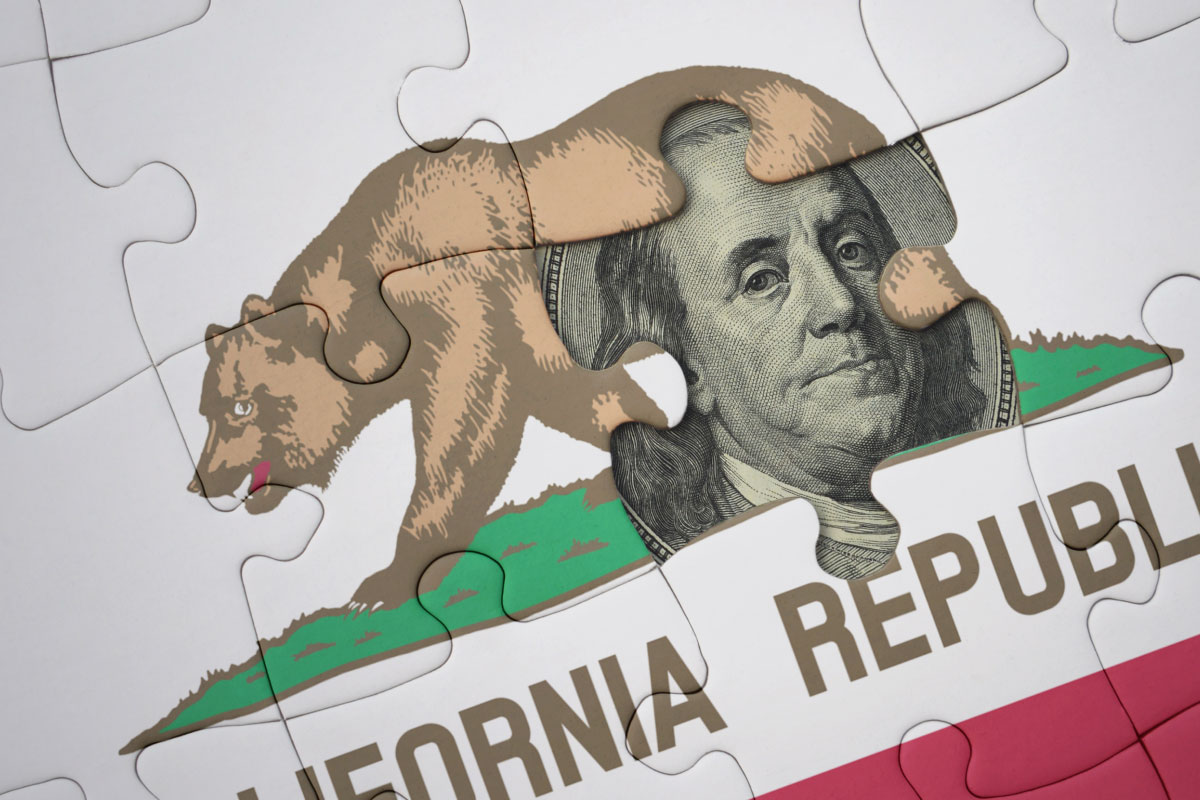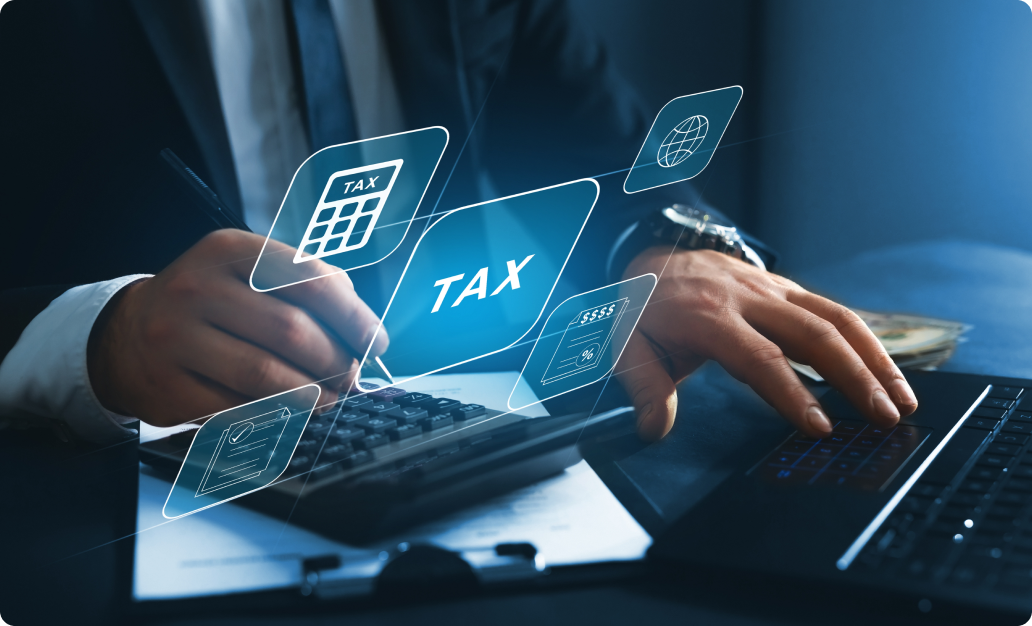




One of the biggest hurdles for online businesses as the ecommerce industry experiences a great boom is the numerous complex and frequently changing sales tax compliance regulations and laws across different US states. Failing to comply can lead to hefty penalties, audits, and headaches down the road.
This guide serves as your roadmap to understanding and mastering how sales tax works across different US states, providing you with actionable insights to keep your business on the right track.
We’ll break down the basics, state-specific sales tax regulations, nuances of charging and collecting tax, and equip you with the knowledge to ensure your e-commerce business stays compliant.
Sales taxes in the United States of America are levies imposed on the sale or lease of certain goods and services. Unlike income tax, which is collected by the federal government, sales taxes are primarily handled at the state level.
The two main types of sales taxes are:
Multiple Taxation: An interesting point to note is that sales tax can be charged on the same item multiple times if it’s being resold at retail multiple times. This is most commonly seen with used cars, where each time the car is sold, sales tax might be applied to the new sales price.
A use tax in the US is a self assessed tax which is applied in situations where you haven’t paid sales tax on a taxable purchase. This happens if you buy something online from a seller not required to collect sales tax in your state, that is, a seller without a sales tax or from an out-of-state seller who doesn’t collect sales tax, and you use the item in a state with a sales tax. In such cases, you’re responsible for reporting the purchase and paying the use tax directly to your state where you reside.
Sales Tax vs Use Tax
Sales tax and use tax are both taxes levied on goods and services, but they differ in how they’re collected:
Sales Tax:
Use Tax:
How it’s Calculated: Figuring out the sales tax you owe is quite straightforward. You simply multiply the sales price of the item by the applicable tax rate. This rate will depend on the state and potentially the specific locality where you’re making the purchase.
Here’s the basic formula to calculate sales tax:
Sales Tax = Sales Price x Sales Tax Rate
Example:
You sell a shirt for $20. The buyer lives in a city with a combined sales tax rate of 8%.
Charging the Tax: This means adding a specific percentage of the sales price of a good or service to the final price the customer pays. For example, if a shirt costs $10 and the sales tax rate is 8%, you would charge the customer $10.80.
Collecting the Tax: This means gathering the sales tax money you charged from the customer. You hold onto this money and don’t keep it as part of your sales revenue.
Who Collects Sales Tax: Even when local governments add their own sales tax, the overall administration often falls on the state. This means you’ll likely file any related paperwork with the state agency responsible for sales tax.
The Role of Nexus in Sales Tax
The concept of “nexus” plays a vital role in determining your sales tax obligations. Nexus refers to a physical presence (like a warehouse) or an economic presence (like exceeding a sales threshold) in a state. If your online store establishes a nexus in a state, you’re generally required to collect and remit sales tax on your sales to customers in that state.
The Seller’s Role:
There are two main approaches states take with sales tax collection:
As an online vendor selling across US states, understanding sales tax nexus is crucial. It defines the connection between your business and a state, determining if you need to collect and remit sales tax. Here’s a comprehensive breakdown:
What is Sales Tax Nexus?
Sales tax nexus refers to the minimum level of activity a business must have within a state to be obligated to collect and remit sales tax on taxable sales made there. In simpler terms, it’s the “connection” that triggers your sales tax responsibility in a state.
Types of Sales Tax Nexus:
There are two primary ways to establish nexus:
Physical Presence Nexus: This is the traditional way, where having a physical presence in a state, such as:
Economic Nexus: This is based on your sales activity within a state, even without a physical presence. The 2018 Supreme Court case South Dakota v. Wayfair established this concept. Each state sets its own economic nexus thresholds, typically:
Additional Factors That Can Trigger Nexus:
Determining Your Sales Tax Nexus:
Every state has its own sales tax rules and thresholds. Here’s how to determine your nexus in each state:
What Happens When You Have Nexus?
Once you have nexus in a state, you’re required to:
The Registration Process (General Overview)
Once you’ve determined if you have a sales tax nexus in a state, then it’s time to register for a sales tax permit in that state. Here’s a general framework, though specifics will vary by state:
Streamlined Sales Tax (SST) Program: A Potential Simplification
If you register for sales tax permits in multiple states, consider the SST program. It streamlines the registration, collection, and remittance process for participating states.
Benefits of SST:
However, SST isn’t a one-size-fits-all solution. Some states don’t participate, and it may not be cost-effective for small businesses.
Sales tax rate refers to the percentage of the purchase price that you pay as tax. It’s basically a fee added on to the original cost of something you buy.
Here’s a breakdown:
So, the sales tax rate tells you exactly what portion of the total cost goes towards the tax.
For example, let’s say you buy a shirt for $20 and the sales tax rate is 8%. This means:
Here are some additional things to know about sales tax rates:
Reporting Sales Tax: Sales tax reporting is the process businesses go through to track and report the sales tax they collect from customers to the government. It involves creating reports that detail:
Why is sales tax reporting important?
There are two main reasons:
Key points about sales tax reporting:
Sales Tax Payment, Filing, and Remittance are three interconnected steps businesses take to handle the sales tax they collect from customers. It’s important to understand the difference between each:
1. Filing: This is the act of submitting a sales tax return to the appropriate tax authority (state or local government). This return details your business’s sales activity for a specific period (month, quarter, or year) and calculates the total amount of sales tax collected.
2. Remittance: This is the actual payment of the sales tax you collected from your customers to the tax authority. It’s essentially sending the money you collected on their behalf.
3. Payment: While often used interchangeably with remittance, payment can refer specifically to the act of sending the money. Remittance encompasses the entire process of ensuring the tax gets to the authority, including filing the return and sending the payment.
Here’s an analogy: Imagine you’re a waiter who collects sales tax on your customers’ bills.
Key Points:
Filing and Remittance: Regardless of who technically owes the tax, the seller is usually responsible for filing sales tax returns and sending the collected taxes to the state.
The Rise of Electronic Remittance:
Many states are now allowing or even requiring businesses to file and pay sales tax electronically, streamlining the process for everyone involved.
Understanding what qualifies as a taxable sale and which items are exempt can be tricky in the US due to the varying definitions and laws across the various states. So what you actually pay tax on can differ significantly depending on where you are in the US. Here’s a breakdown:
What Qualifies as a Taxable Sale?
In the US, sales tax applies to most transfers of tangible personal property (physical goods) when you pay cash or promise to pay cash (credit card, etc.). Here’s a breakdown of some key points:
Other Tax Exemptions
Businesses vs. Consumers
Taxation Based on Use
Exemption Certificates
If you qualify for a sales tax exemption, you can typically obtain a certificate from the state that you can show to sellers to avoid paying the tax.
What is a resale license: A resale license, also known as a reseller permit or sales tax permit, is a document issued by a state government that allows a business to purchase goods wholesale without paying sales tax. It is sometimes also called sales tax resale number
This is because the business intends to resell the goods to customers, who will then pay sales tax on the purchase.
Resale licenses are beneficial for businesses that purchase goods in bulk for resale, as they can save money on sales tax. They are also important for businesses that sell taxable goods, as they are required to collect sales tax from customers.
How to get a resale certificate in the US: To obtain a resale license, a business must typically complete an application and submit it to the state tax agency. The application may require information such as the business name, address, and type of business. There may also be a fee associated with obtaining a resale license.
Here’s a breakdown:
The Benefit:
How it Works:
Important Points:
How Long is a Resale Certificate Valid or Good for
The validity period of a resale certificate depends on your state. Here’s a breakdown:
Best Practices:
Even in states without expiration, it’s good practice to request an updated resale certificate from your customers every 3-4 years. This ensures the information is current and helps protect you from potential tax liabilities in case of an audit.
Finding Specific Information:
To determine the exact validity period for resale certificates in your state, you can visit your state’s Department of Revenue website or search online for “[your state] resale certificate validity.”
How Long Does it Take to Get Resale Certificate in the US
The processing time for a resale certificate can vary depending on the state. In some states, you may be able to get a resale certificate immediately by downloading and filling out a form online. In other states, it may take a few weeks for your resale certificate to be processed.
what Does a Resale Certificate Look Like
A resale certificate is a form that a business can use to exempt itself from paying sales tax on purchases of goods that will be resold.
The specific format of a resale certificate can vary from state to state, but they typically include the following information:
Sales tax penalties and interests are fees you may incur if you don’t handle sales tax properly for your business. There are two main areas where these penalties and interest can apply:
Here’s a breakdown of the key terms:
It’s important to note that the specific penalties and interest rates will vary depending on your location. For instance, some states might have a minimum penalty amount, while others might have a maximum penalty capped as a percentage of the unpaid tax.
Here’s an example:
Imagine you run a small store and owe $1,000 in sales tax because you filed your return late. You might face a penalty of 10% of the owed amount ($100) and be charged interest on the $1,000 at a rate of 1% per month until you pay it off.
A sales tax refund is when you get money back from the government (or sometimes the retailer) for sales tax that you were not supposed to pay. There are a couple of ways this can happen:
Here’s the process for getting a sales tax refund:
Here are some additional things to keep in mind:
A sales tax audit is a formal review conducted by a government tax authority to see if a business has been following sales and use tax laws. In other words, they check to make sure the business has been collecting the right amount of sales tax from customers and paying it to the state.
Here’s a breakdown:
If you’re ever selected for a sales tax audit, it’s important to cooperate and have your records organized
Vendor Sales Tax Licenses, also referred to as seller’s permits, sales tax permits, or vendor licenses, are all essentially the same thing. It’s a permission granted by a state to a business to collect sales tax on taxable goods or services they sell.
Here’s a breakdown of what it means:
Why do you need one?
Most states require businesses to collect sales tax on behalf of the government. The vendor license allows you to do this and then send the collected tax to the state.
Not all businesses need one:
Where to get one?
The process for obtaining a vendor sales tax license varies by state. Here are some resources to help you get started:
Remember, failing to obtain a vendor sales tax license when required can result in penalties and fines.
Sales tax software is a digital tool that helps businesses, especially small businesses, manage the complexities of sales tax. It tackles three main areas:
Calculating Sales Tax: Sales tax rates vary depending on location (state, county, city) and product category. This software automates the process, ensuring you charge the correct amount based on the customer’s location and what they’re buying.
Reporting and Filing: Sales tax software helps you keep track of all your sales tax collections and simplifies the process of filing sales tax returns with the appropriate authorities.
Compliance: Sales tax laws are constantly evolving, and keeping up can be a challenge. This software stays updated with the latest regulations, helping your business stay compliant and avoid penalties.
Who Needs Sales Tax Software?
Sales tax software is particularly beneficial for:
Choosing the Right Sales Tax Software:
Here are some things to consider when choosing sales tax software:
Overall, sales tax software is a valuable tool for businesses of all sizes that want to save time, ensure accuracy, and stay compliant with sales tax regulations.
Lorem ipsum dolor sit amet, consectetur adipiscing elit. Ut elit tellus, luctus nec ullamcorper mattis, pulvinar dapibus leo.